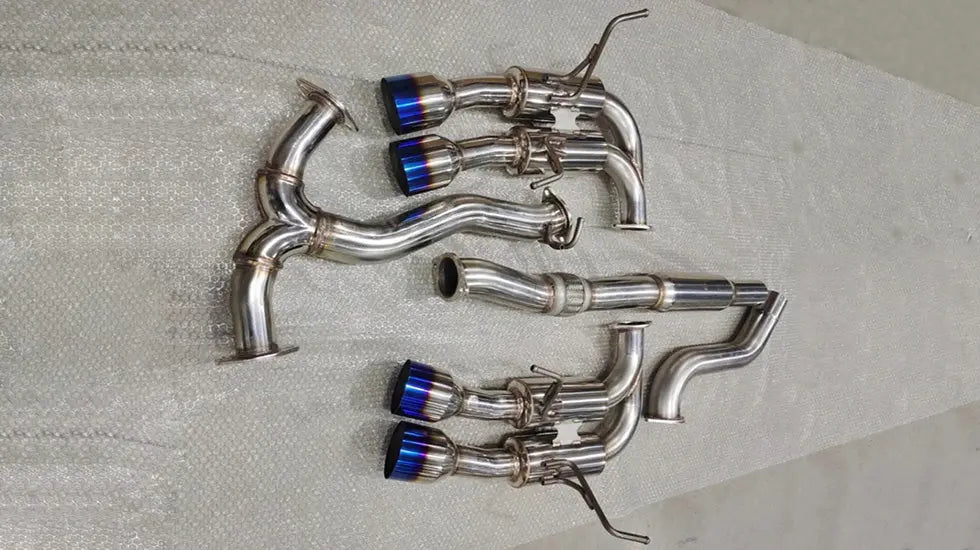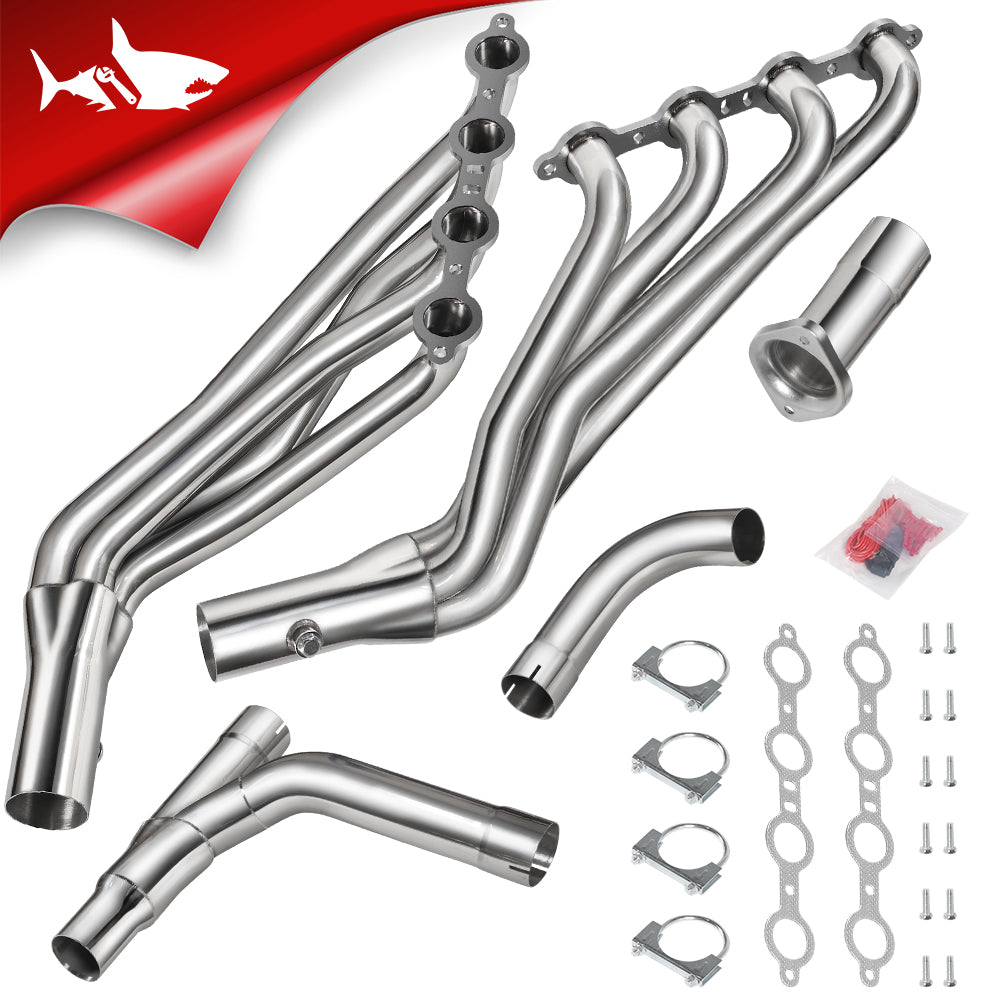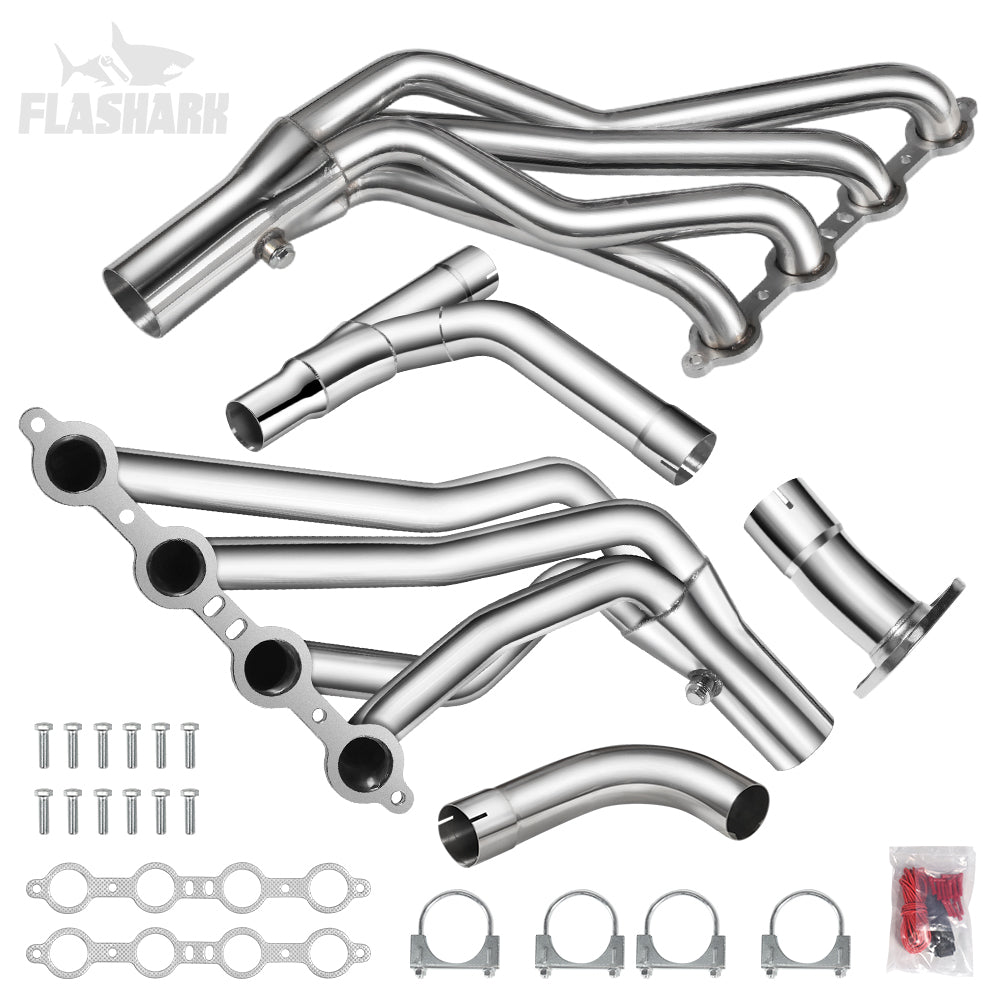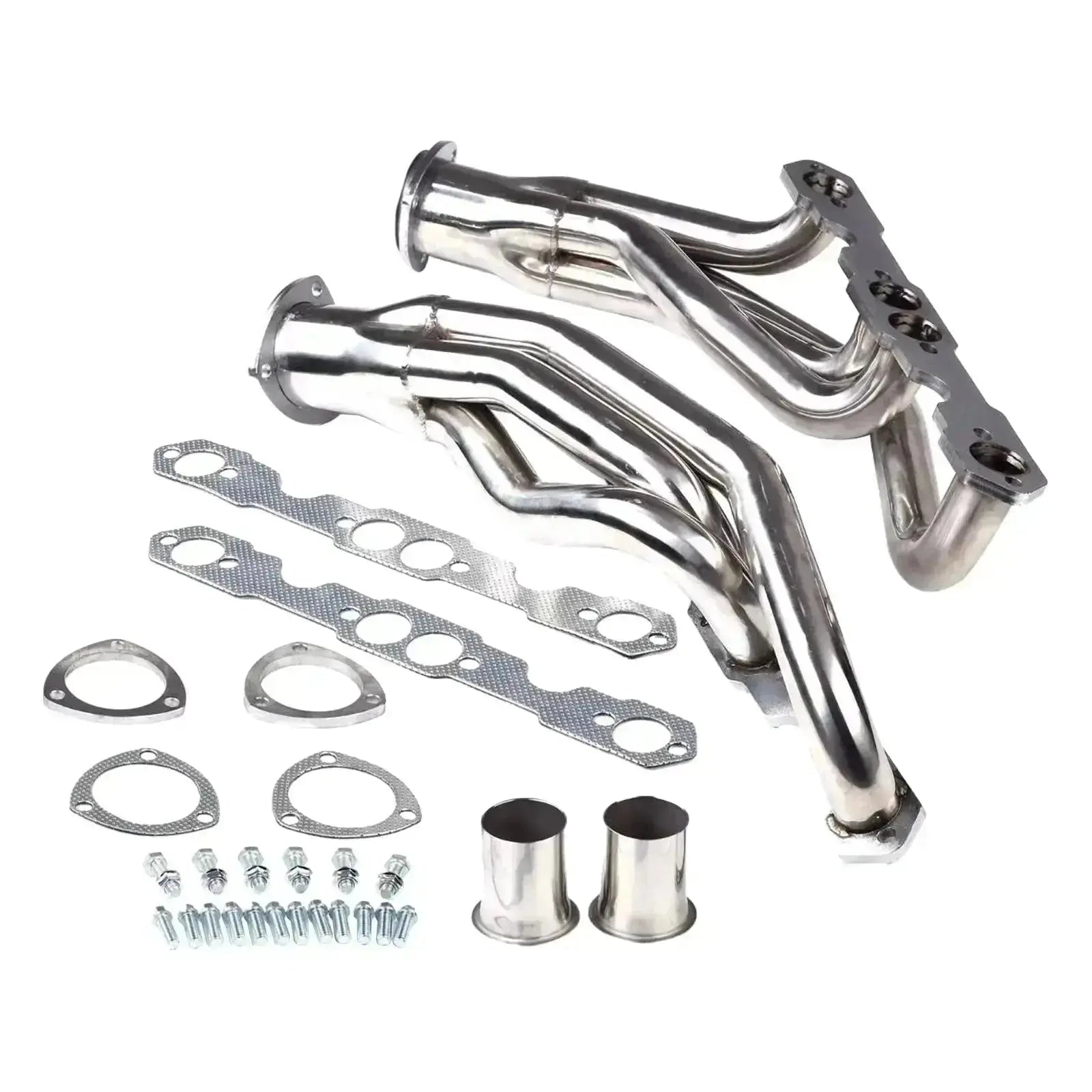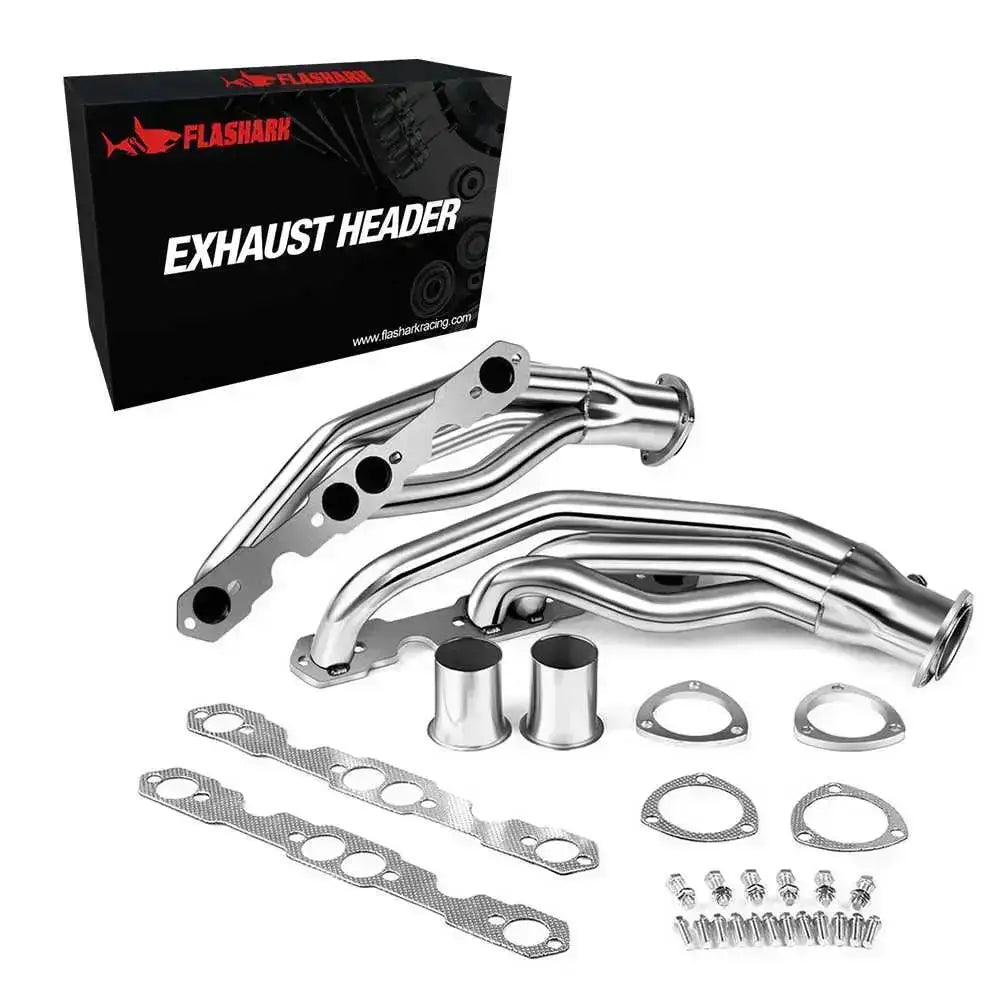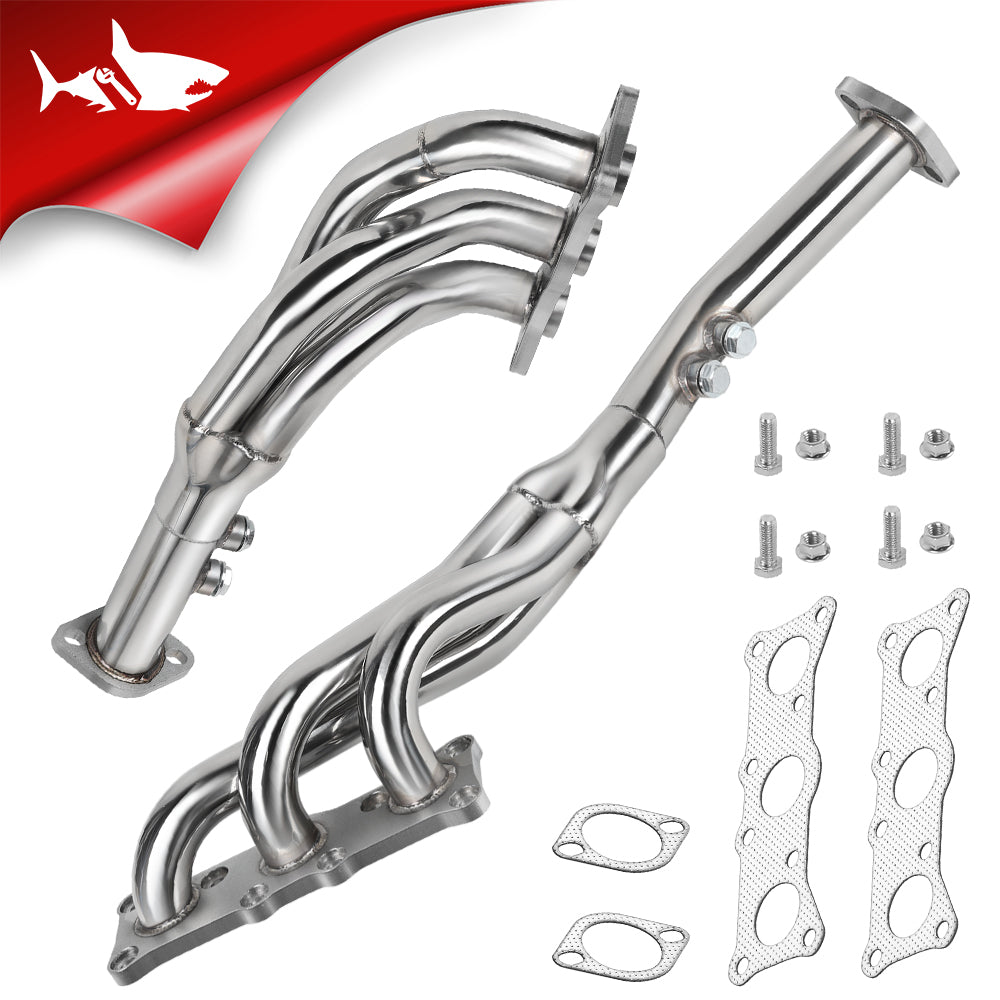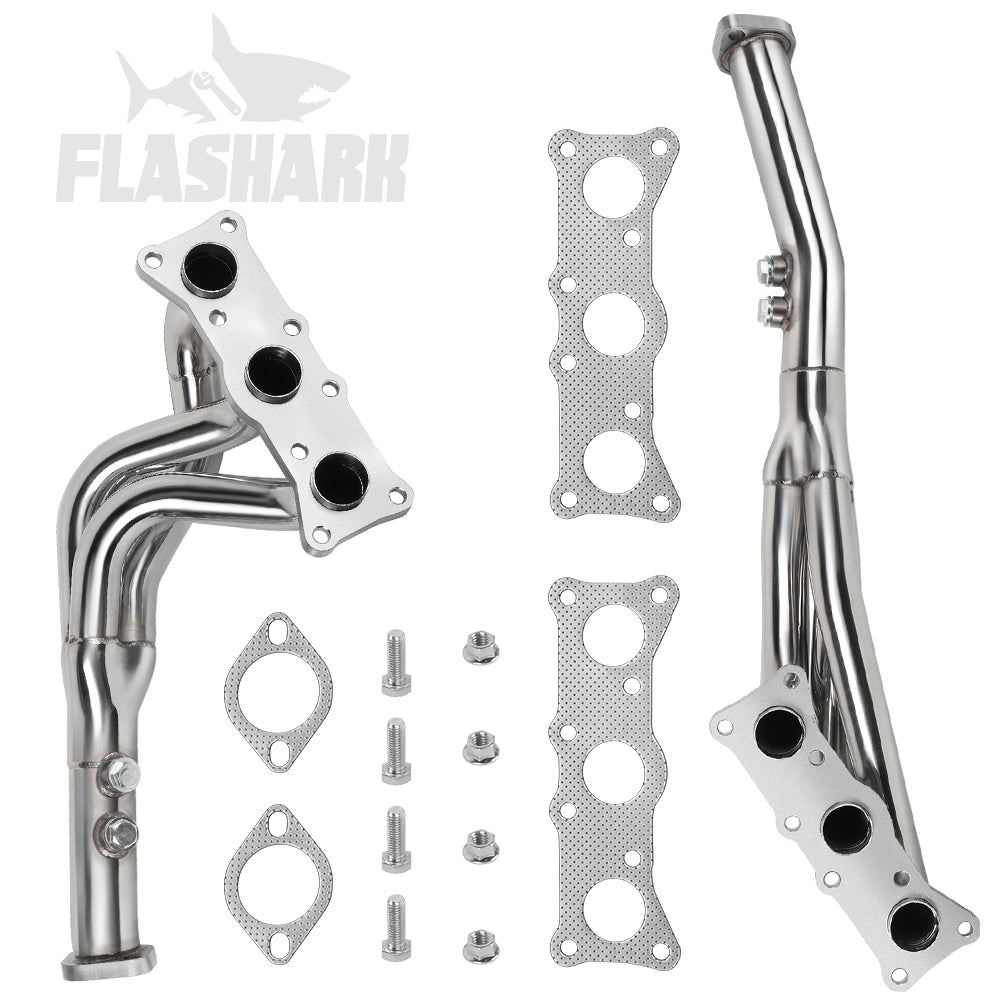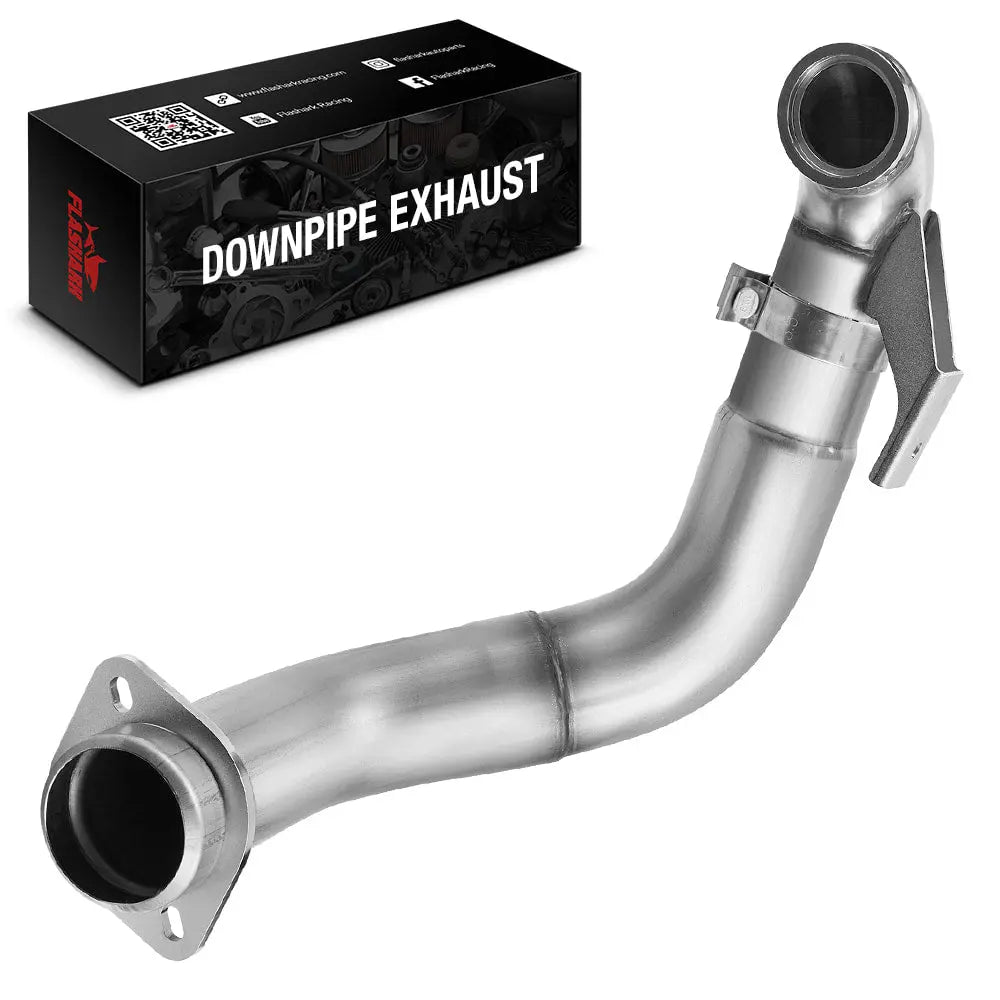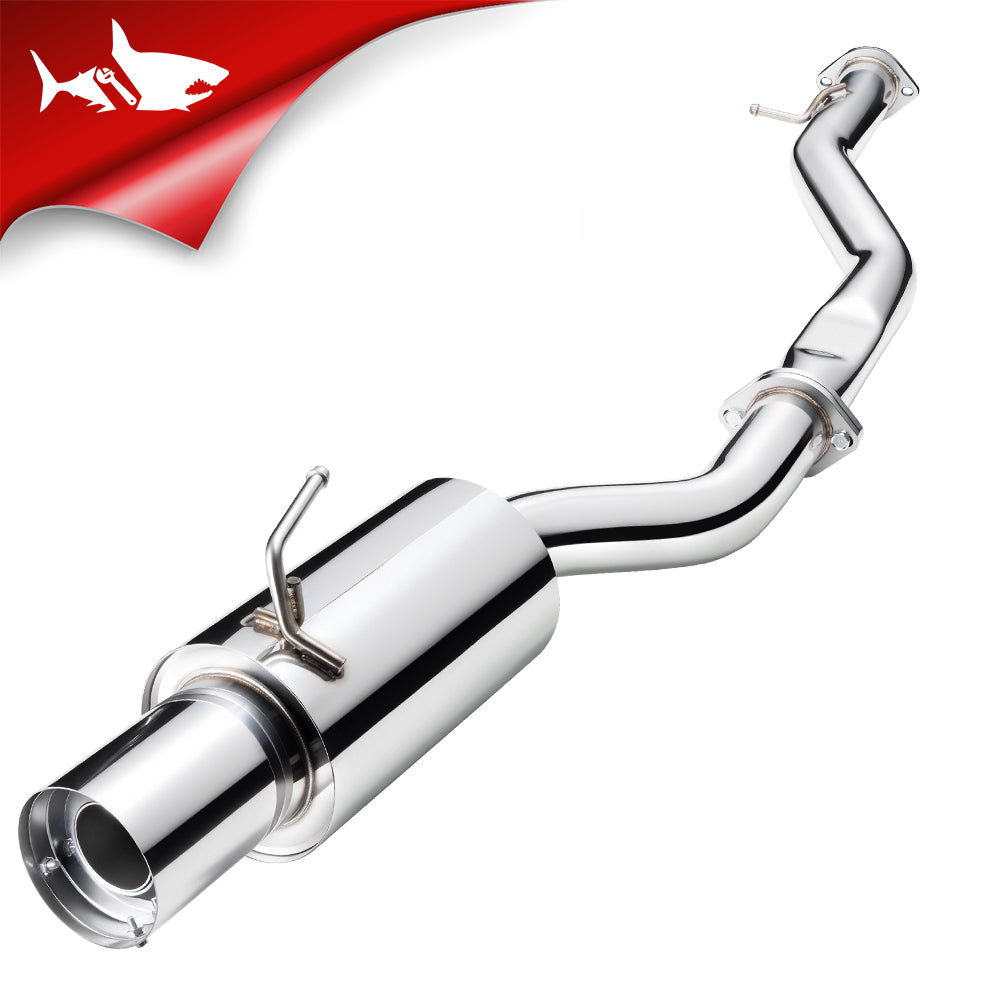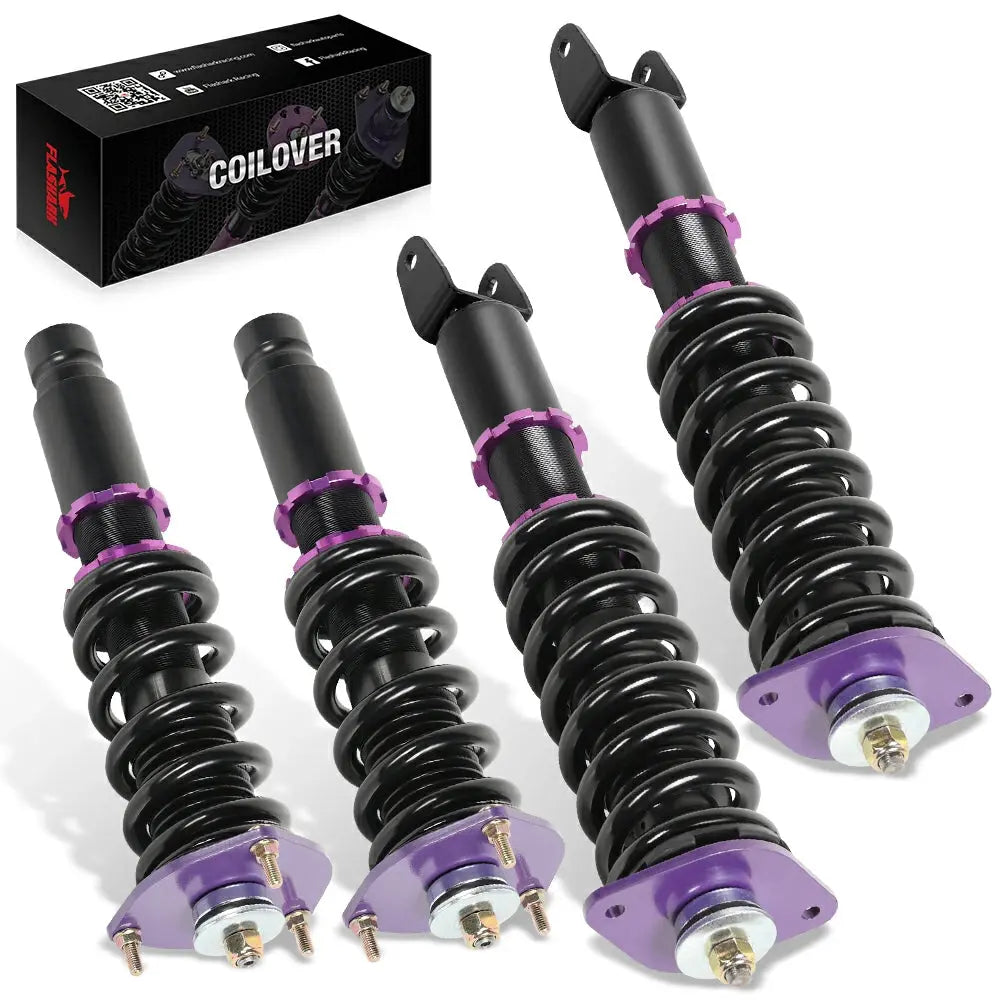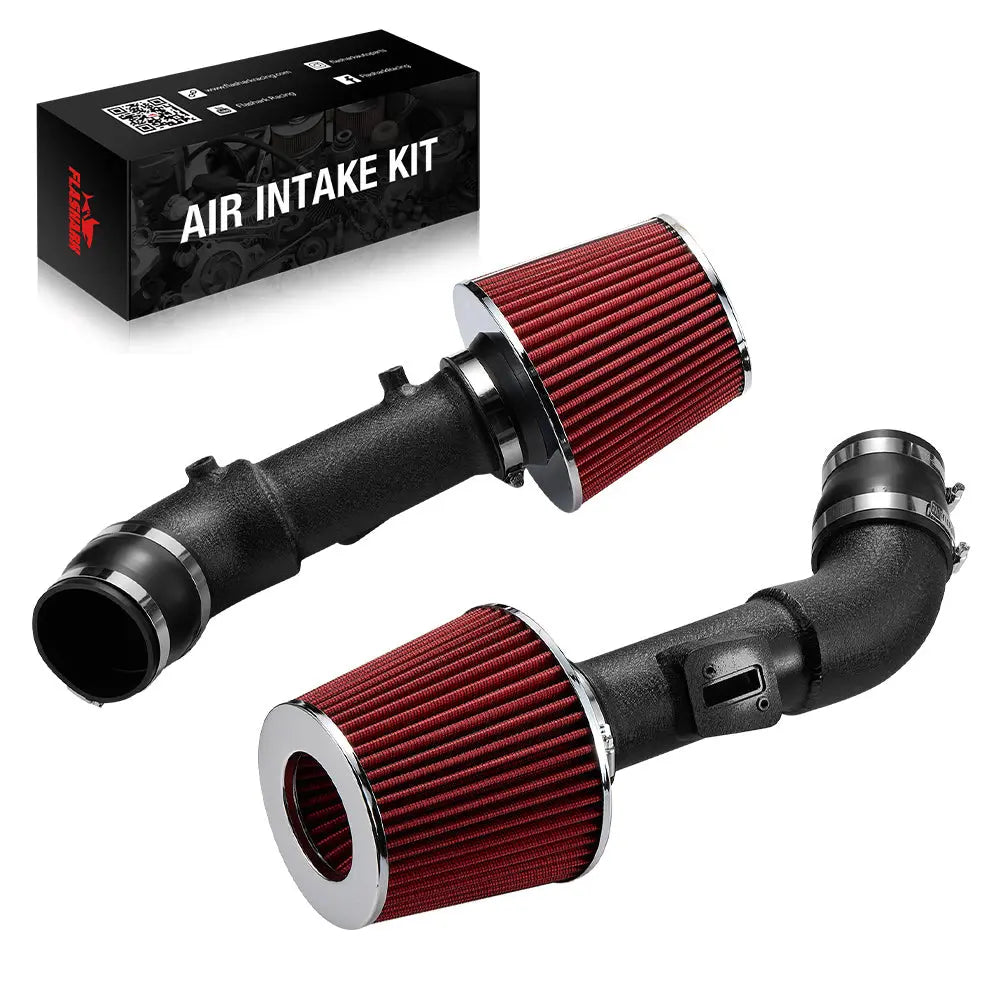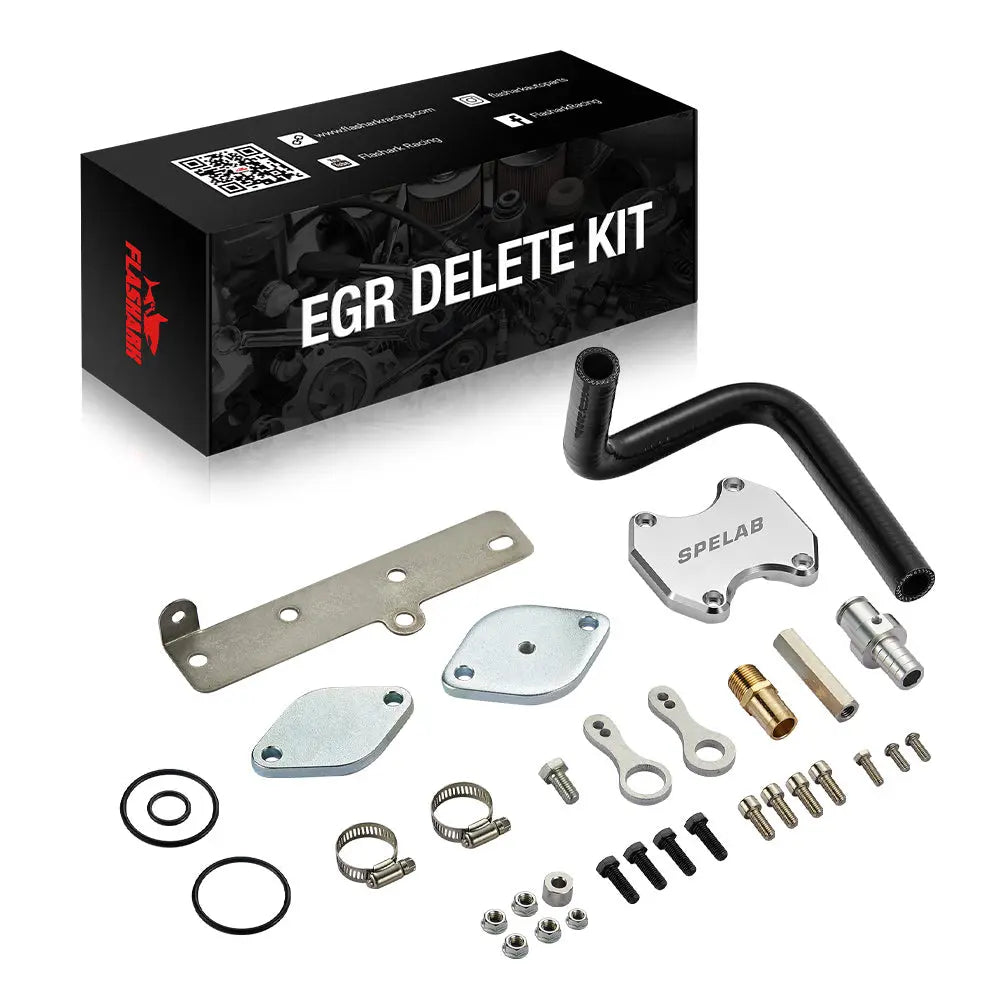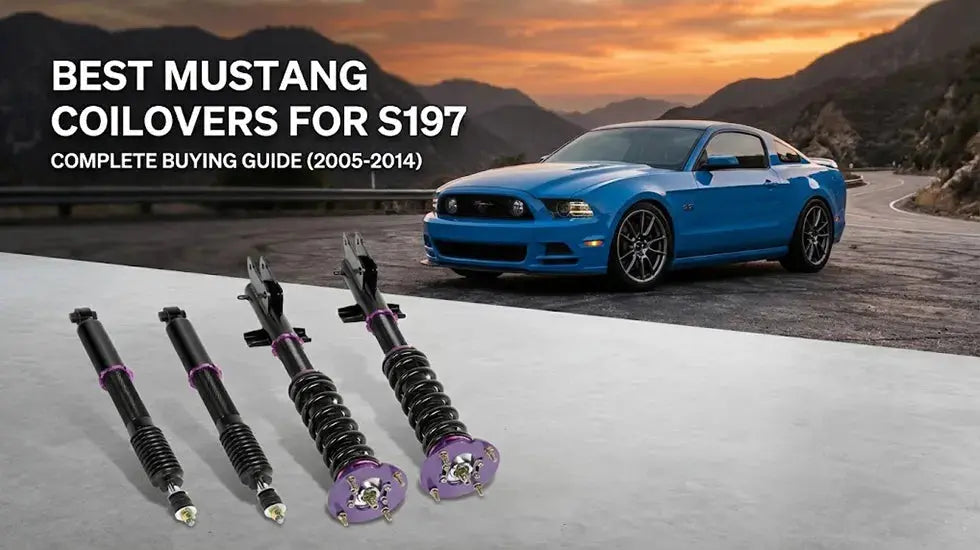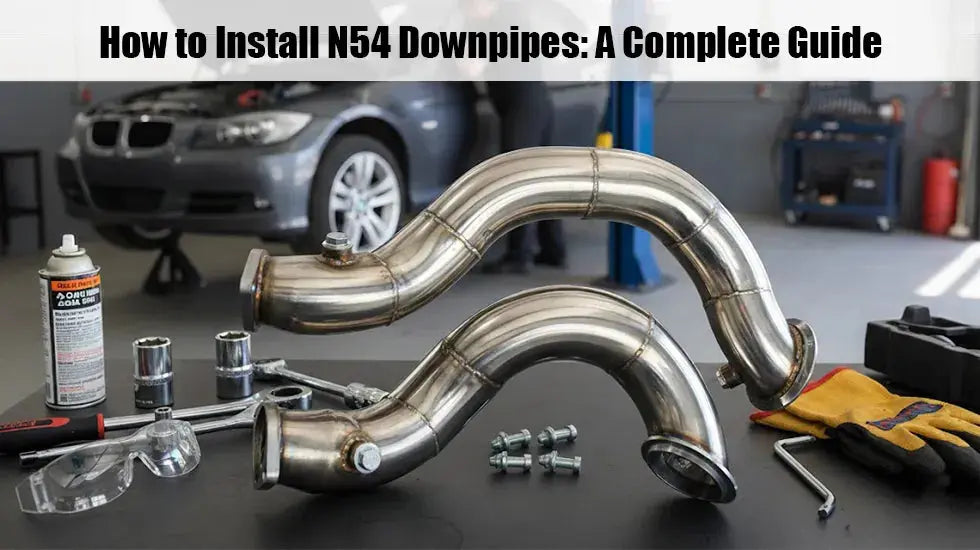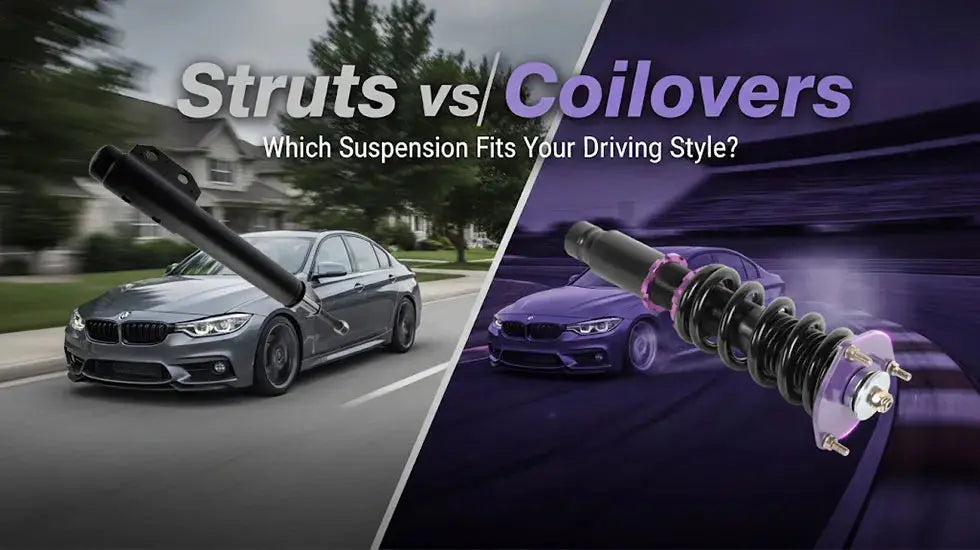Actualizar el sistema de escape de su auto puede mejorar significativamente tanto su rendimiento como su sonido. Entre las mejoras más comunes se encuentran los sistemas de escape cat-back y shaft-back. Si bien ambos prometen mejorar el flujo de escape y la potencia del motor, difieren considerablemente en diseño, costo, complejidad de instalación e impacto general en el rendimiento y el sonido del vehículo. Este artículo profundizará en las diferencias clave entre estos dos sistemas, ayudándole a decidir cuál es la mejor opción para su auto y sus necesidades de conducción. Ya sea que priorice la potencia, el sonido o el presupuesto, comprender estos sistemas le ayudará a tomar la decisión correcta.
¿Qué es un sistema de escape Cat Back?
Un sistema de escape cat-back reemplaza todo, desde el convertidor catalítico hasta la punta del escape. Generalmente incluye la tubería, el silenciador y el/los resonador(es), todos diseñados para mejorar el flujo de escape del vehículo. Al mejorar los componentes del sistema de escape detrás del convertidor catalítico, el sistema cat - back proporciona un aumento significativo del rendimiento, junto con un sonido de escape más potente y profundo.
Componentes clave y funcionalidad
Los componentes principales de un sistema de respaldo de gato incluyen:
- Tubos : Los tubos de mayor diámetro permiten un mejor flujo de escape, reduciendo la contrapresión y mejorando la eficiencia del motor.
- Silenciador : diseñado para reducir el ruido del escape, manteniendo al mismo tiempo un tono más agresivo en comparación con el sistema original.
- Resonadores : ayudan a controlar las frecuencias del sonido, afinando aún más el sonido del escape.
Los tubos más grandes y el diseño avanzado de estos componentes optimizan el flujo de escape, lo que contribuye a una mayor eficiencia y rendimiento del motor. La función principal del sistema es permitir que los gases salgan del motor con mayor rapidez, reduciendo el esfuerzo general del motor y aumentando la potencia.
Beneficios de rendimiento y características de sonido
Instalar un sistema de escape cat - back puede proporcionar mejoras notables en potencia y par motor, especialmente en vehículos de alto rendimiento. El mayor flujo de escape reduce la contrapresión del motor, lo que permite que este respire con mayor libertad. Esto se traduce en mayor potencia. Además, el sistema cat - back altera significativamente el sonido del coche, produciendo a menudo un sonido de escape más fuerte y agresivo, que muchos entusiastas prefieren.
¿Qué es un sistema de escape con eje trasero?
Un sistema de escape trasero es una opción más económica y menos intrusiva, ya que solo reemplaza la sección del sistema de escape desde el eje trasero hasta la punta. Generalmente incluye el silenciador y los tubos de escape, pero deja intacto el resto del sistema de escape, incluyendo el convertidor catalítico y los tubos que lo conectan.

Componentes clave y funcionalidad
Los componentes de un sistema de suspensión trasera generalmente incluyen:
- Silenciador : Una pieza clave del sistema, diseñada para modificar el sonido del escape. Un silenciador mejorado puede cambiar el tono del escape del vehículo, a menudo haciéndolo más ruidoso o más agresivo.
- Tubos de escape : La sección que va desde el silenciador hasta la punta del escape, a menudo diseñada para ser visualmente atractiva y aumentar el carácter del sonido.
Dado que el sistema no modifica ningún componente interno del motor ni el convertidor catalítico, su impacto en el rendimiento del motor es menor. Su función principal es modificar el sonido y la apariencia del escape del vehículo, haciéndolo más ruidoso y potencialmente más agresivo.
Beneficios de rendimiento y características de sonido
El sistema de eje trasero ofrece una ligera mejora en el rendimiento, que afecta principalmente al sonido del escape , más que a la eficiencia del motor. La principal ventaja reside en el sonido: al reemplazar las secciones del silenciador y el tubo de escape, este sistema puede producir un sonido de escape más fuerte y gutural, sin alterar significativamente la potencia del vehículo. Es una excelente opción para quienes buscan una mejora de sonido más notable sin los mayores costos ni las mejoras de rendimiento de un sistema de eje trasero .
Diferencia entre escape Cat-Back y Axle-Back
Si bien los sistemas de escape cat-back y shaft-back tienen como objetivo mejorar el sonido y la estética de su vehículo (y en distintos grados, su rendimiento), la diferencia principal radica en la cantidad de sistema de escape que se reemplaza , lo que a su vez afecta el rendimiento, el sonido, el costo y la instalación .
1. Alcance del reemplazo
-
Escape Cat-Back : reemplaza todo, desde el convertidor catalítico hasta la punta de escape, incluidos los tubos intermedios, los silenciadores y los resonadores.
-
Escape hacia atrás : solo reemplaza el escape desde el eje trasero hasta la punta, generalmente el silenciador y los tubos de escape.
2. Impacto en el rendimiento
-
Cat-Back : ofrece mejoras significativas en potencia y torque debido a la reducción de la contrapresión y un mejor flujo de escape.
-
Axle-Back : tiene un impacto mínimo en el rendimiento; altera principalmente el sonido sin cambiar significativamente el flujo de escape.
3. Diferencia de sonido
-
Cat-Back : produce un tono más profundo, más fuerte y más agresivo.
-
Axle-Back : cambia el tono y el volumen pero es menos profundo e intenso que un cat-back.
4. Comparación de costos
-
Cat-Back : generalmente cuesta entre $500 y $2,500.
-
Axle-Back : Más asequible, desde $200 a $1,500.
5. Dificultad de instalación
-
Cat-Back : Requiere más herramientas y tiempo; la instalación puede tardar 2 a 4 horas y puede implicar soldadura.
-
Axle-Back : fácil de instalar, a menudo en menos de una hora con herramientas básicas.
6. Comprador ideal
-
Cat-Back : Ideal para conductores de pista o entusiastas que buscan rendimiento y sonido.
-
Axle-Back : ideal para conductores diarios que desean una mejora en el sonido sin cambios en el rendimiento ni costos elevados.
Comparación de rendimiento: Cat Back vs. Axle Back
Cómo el Cat Back y el Axle Back afectan el rendimiento del motor
Al comparar la parte trasera del gato En comparación con los sistemas de eje trasero, el escape trasero catalítico tiene un impacto más significativo en el rendimiento del motor. Al reemplazar la sección completa de escape del convertidor catalítico, mejora el flujo de escape, permitiendo que los gases salgan del motor con mayor eficiencia. Esto resulta en una menor contrapresión y un mejor rendimiento del motor, lo que generalmente se traduce en un aumento notable de la potencia y el par motor.
Por otro lado, el sistema de eje trasero , si bien mejora el sonido, tiene un efecto mínimo en el rendimiento del motor. Dado que solo reemplaza los tubos de escape y el silenciador, el flujo de escape se mantiene prácticamente inalterado. La mejora del rendimiento, si la hay, suele ser insignificante.
Diferencias en caballos de fuerza y torque
El sistema de escape trasero cat -back tiene más probabilidades de proporcionar aumentos apreciables de potencia y par motor. Dependiendo del vehículo, estas ganancias pueden variar de 5 a 20 caballos de fuerza, especialmente en vehículos de alto rendimiento. Este aumento se debe a la capacidad del sistema para reducir la contrapresión del escape, lo que permite que el motor expulse los gases de escape con mayor rapidez y eficiencia.
Sin embargo, el sistema de eje trasero ofrece poca o ninguna mejora en la potencia o el par motor. Si bien puede mejorar ligeramente el flujo de escape, no modifica significativamente la potencia del vehículo.
Impacto en el flujo y la eficiencia del escape
Un sistema de escape trasero mejora drásticamente el flujo y la eficiencia gracias a sus tubos más grandes y un mejor diseño. El mayor diámetro de los tubos y la conducción optimizada de los gases de escape permiten una expulsión más rápida, reduciendo el esfuerzo del motor y mejorando la potencia.
El sistema de eje trasero , en cambio, tiene un impacto mínimo en el flujo de escape. No afecta a los componentes internos del motor, como el convertidor catalítico, lo que significa que tiene un menor impacto en la eficiencia general.
Comparación de sonido: Cat Back vs. Axle Back
Cómo el sistema Cat-Back y el Axle-Back modifican el sonido del escape
El sistema de escape trasero ofrece un cambio más sustancial en el sonido del escape en comparación con el sistema de escape trasero . Al reemplazar todo el sistema de escape desde el convertidor catalítico hacia atrás, tiende a producir un sonido más profundo y agresivo, que suele ser el preferido por los entusiastas. El sonido puede variar desde una sutil mejora hasta un rugido gutural, dependiendo del vehículo y el sistema específico elegido.
En cambio, el sistema de eje trasero afecta principalmente el sonido a través del silenciador y el tubo de escape. Proporciona un sonido de escape más potente y deportivo sin alterar el sonido general del motor. El sonido suele ser más agudo y agresivo, pero no tan profundo ni resonante como el de un sistema de eje trasero .
Diferencias en la intensidad, el tono y el volumen del sonido
El sistema de escape trasero suele producir un sonido más potente y completo. Gracias a los tubos de mayor diámetro y a las modificaciones más exhaustivas, el sistema está diseñado para aumentar el volumen y la intensidad.
El sistema de eje trasero suele ofrecer un aumento de sonido más sutil. Si bien amplifica el sonido del escape, el volumen y el tono son menos agresivos en comparación con el sistema de gato trasero . Es ideal para conductores que buscan una mejora notable del sonido sin la excesiva sonoridad de un reemplazo completo del sistema.
Consideraciones para el uso en la calle frente al uso en la pista
Para el uso diario en la calle, un sistema de eje trasero puede ser más práctico. Ofrece una mejora significativa del sonido sin causar demasiadas molestias. Para quienes participan frecuentemente en carreras o eventos de automovilismo, el sistema de eje trasero puede ser la mejor opción debido a su rendimiento mejorado y un sonido más potente, similar al de las carreras.
Consideraciones sobre costos e instalación
Diferencias de precio entre los sistemas Cat Back y Axle Back
Un sistema de escape cat - back suele ser más caro que un sistema de escape con eje trasero . Los componentes adicionales y los tubos más grandes aumentan el costo total. En promedio, un sistema cat - back puede costar entre $500 y $2,500, dependiendo de la marca y el material utilizado.
El sistema de suspensión trasera , en cambio, es más asequible, con un precio que suele oscilar entre $200 y $1,500. Su menor costo lo convierte en una opción atractiva para quienes tienen un presupuesto limitado y priorizan el sonido sobre el rendimiento.
Complejidad y tiempo de instalación
Instalar un sistema de escape trasero es más complejo y requiere más tiempo. Requiere reemplazar una parte mayor del sistema de escape, lo que puede implicar cortar y soldar en algunos casos. La instalación suele tardar de 2 a 4 horas, dependiendo del vehículo y de si se trata de una instalación profesional o de bricolaje.
En comparación, el sistema de eje trasero es mucho más fácil de instalar, ya que suele requerir menos de una hora de trabajo. Dado que solo reemplaza la sección trasera del escape, es una actualización más sencilla que la mayoría de los entusiastas de los automóviles pueden realizar con herramientas básicas.
Instalación DIY vs. Ayuda profesional
Para quienes tienen conocimientos básicos de mecánica, instalar un sistema de eje trasero suele ser un proyecto que pueden hacer ellos mismos. Al ser más sencillo, no requiere herramientas ni experiencia especializada. Por otro lado, la instalación de un sistema de cat -back suele ser mejor en manos de profesionales, especialmente para quienes carecen de las habilidades o el equipo necesarios para realizar la instalación.
¿Qué sistema de escape es adecuado para usted?
Factores a considerar al elegir entre Cat Back y Axle Back
La decisión de elegir entre un sistema de escape cat -back y uno de escape con eje trasero depende de varios factores, como tus objetivos de rendimiento, tus preferencias de sonido y tu presupuesto. Si te centras principalmente en mejorar el sonido y tienes un presupuesto ajustado, el sistema de escape con eje trasero es probablemente la mejor opción. Proporciona una mejora notable del sonido sin necesidad de una inversión significativa.
Sin embargo, si busca un aumento de rendimiento más significativo y no le importa gastar más, el sistema de escape trasero ofrece una mejora integral que puede mejorar tanto la potencia como el sonido. Además, si busca un sonido de escape más potente y agresivo, el sistema de escape trasero será la opción más adecuada.
Presupuesto, objetivos de rendimiento y preferencias de sonido
Si tiene un presupuesto más alto y busca mejorar tanto el rendimiento como el sonido, el sistema de escape cat.back es una excelente opción. Por otro lado, si le interesa principalmente mejorar el sonido y trabaja con un presupuesto más limitado, el sistema de escape con eje trasero es una excelente opción. Proporciona un aumento notable del sonido sin los mayores costos ni las grandes mejoras de rendimiento que ofrece un sistema de escape cat.back .
Aplicaciones ideales para cada sistema
- Eje trasero : Ideal para entusiastas de los coches que buscan un sonido de escape más potente sin aumentar significativamente el rendimiento. Ideal para conductores habituales que desean mejorar el sonido de su coche sin gastar una fortuna.
- Cat Back : Perfecto para conductores que buscan mejoras tanto en rendimiento como en sonido. Ya sea que prefieras conducir con alto rendimiento o simplemente quieras un aumento notable de potencia, el sistema Cat Back ofrece una solución más completa. También es ideal para entusiastas de las pistas que necesitan un mejor flujo de escape para optimizar la eficiencia del motor.
Cómo tomar la decisión correcta para su coche
En resumen, la diferencia clave entre los sistemas de escape cat - back y de eje trasero radica en su impacto en el rendimiento y su costo. El sistema cat -back ofrece mayores mejoras de rendimiento, un flujo de escape mejorado y un sonido más agresivo, pero conlleva un mayor costo y una instalación más compleja. El sistema de eje trasero , si bien ofrece un sonido más potente, se centra principalmente en modificar el sonido del escape con un impacto mínimo en el rendimiento del motor y a un precio más asequible.
Para quienes buscan un mejor rendimiento, el escape trasero de gato es la opción ideal. Ofrece mayor ganancia de potencia, mayor eficiencia del motor y un sonido de escape más robusto. Si tiene un presupuesto limitado o busca una mejora de sonido más rápida, el sistema de escape trasero de gato es una excelente opción. Es una forma sencilla y económica de que su auto suene más agresivo, pero sin las mejoras de rendimiento que ofrece un sistema trasero de gato .
En definitiva, tu decisión debe basarse en tus prioridades, ya sea rendimiento, sonido o presupuesto. Considera el uso que le darás a tu coche y tus preferencias personales, y elige el sistema que mejor se adapte a tus objetivos de conducción.

